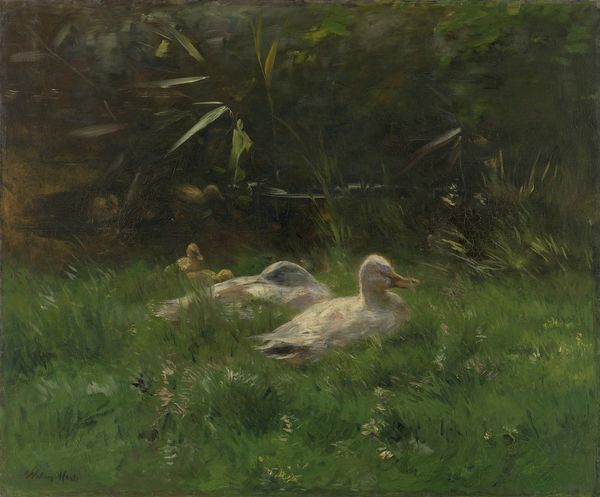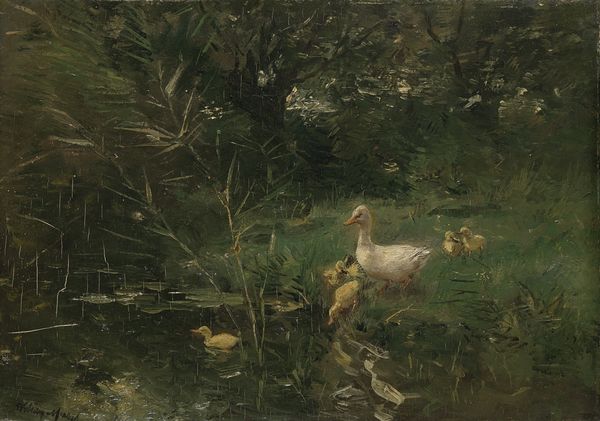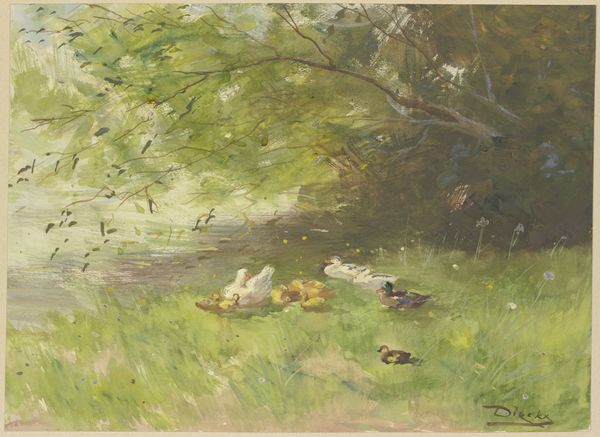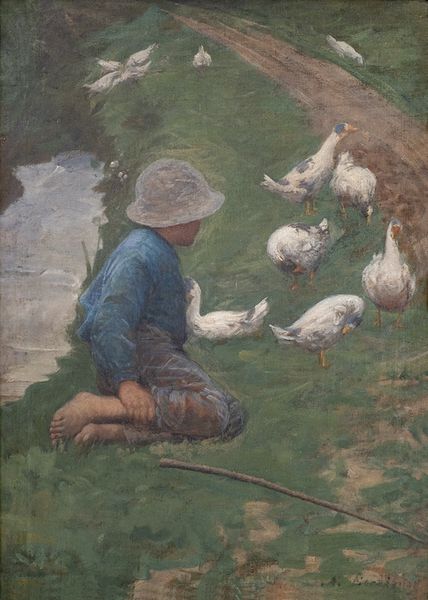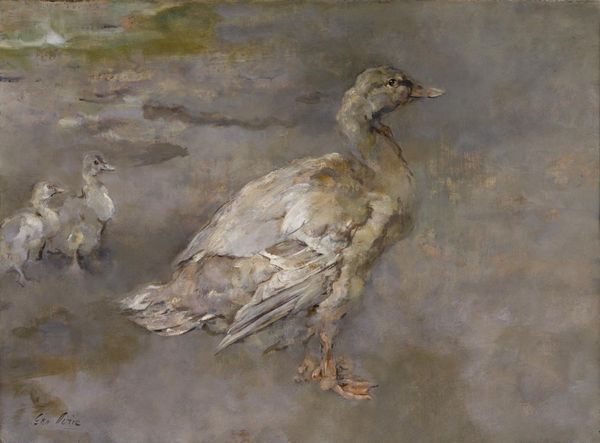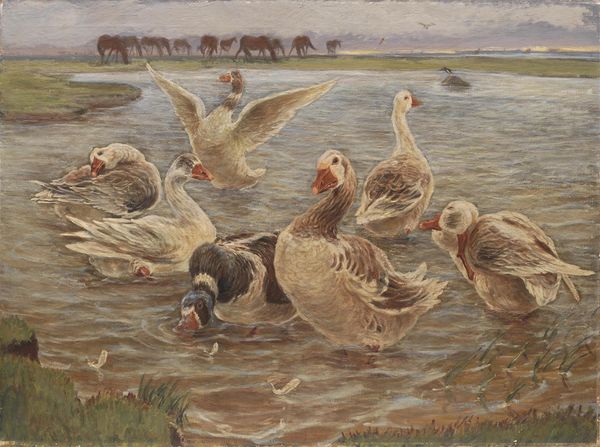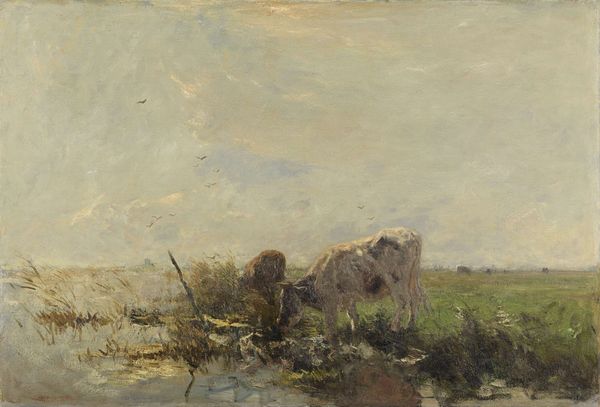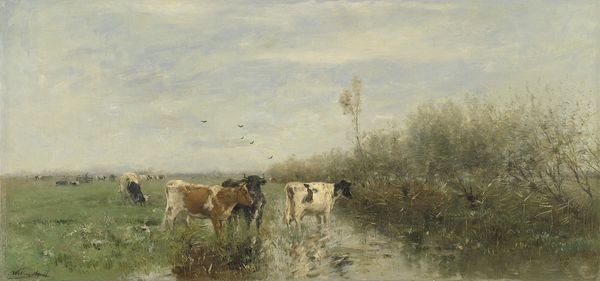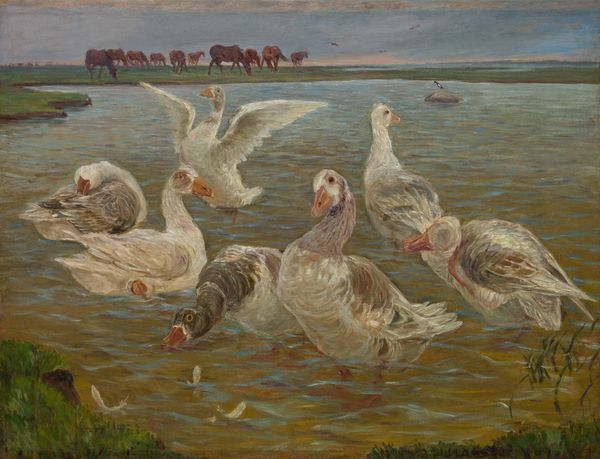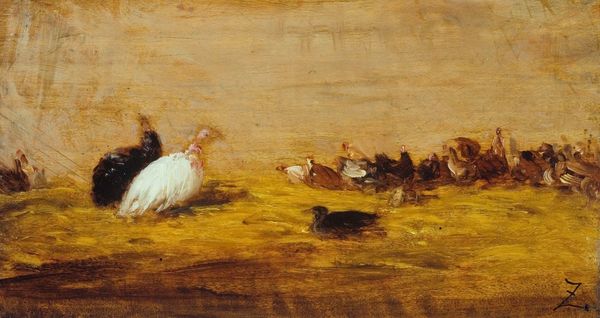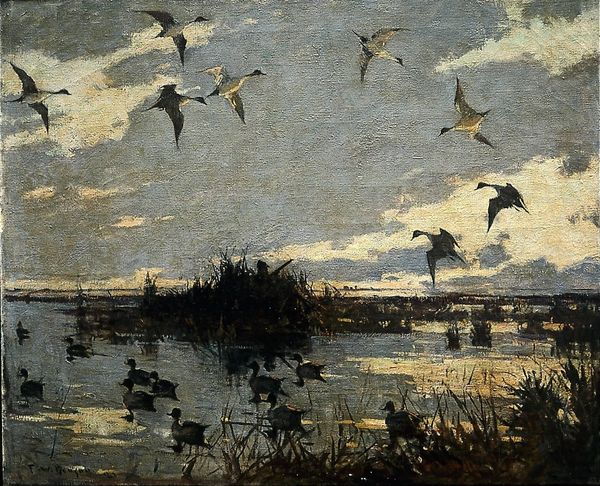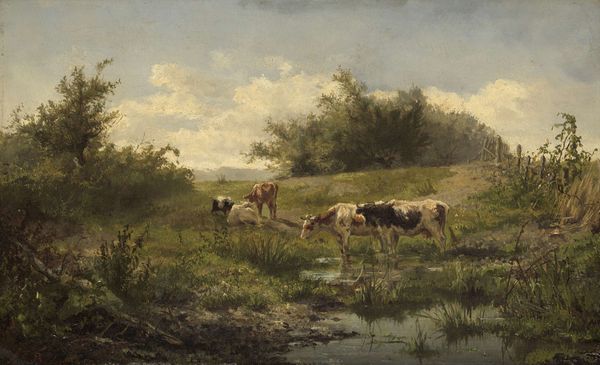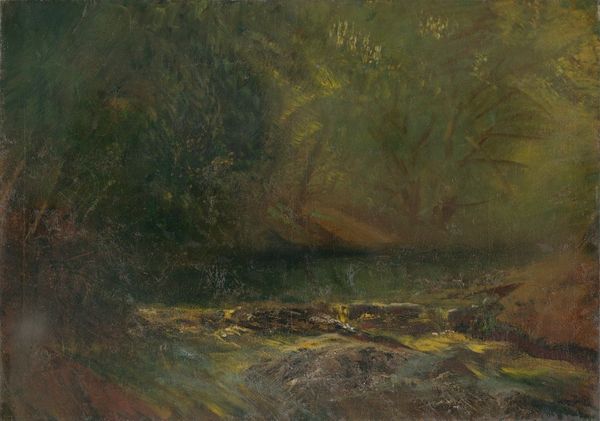
Dimensions: height 55.5 cm, width 89.5 cm, depth 12.2 cm
Copyright: Rijks Museum: Open Domain
Curator: Let's discuss "White Duck with Ducklings," an oil painting attributed to Willem Maris, likely created between 1880 and 1910. What strikes you initially? Editor: Honestly? A certain... peace. It's just… fuzzy. In a nice way. Like a half-remembered summer afternoon. All greens and soft light and downy little things. Curator: The materiality contributes, certainly. Notice Maris’s almost Impressionistic brushwork; loose strokes that define form without hard edges. The paint itself conveys softness, mimicking the ducklings' feathers. Consider how these naturalistic paintings became popular: the rising urban bourgeoisie longed for depictions of the rural idyll during rapid industrialization. Editor: Exactly! You can almost smell the fresh water and grass. It's a staged simplicity, of course. Farm labor probably looked a lot different back then than this dreamy scene suggests, I imagine? I'm also really enjoying the reflections and sense of depth. How'd he achieve it? Curator: By layering thin glazes of oil paint. Maris was part of the Hague School, and while they were influenced by the Barbizon School's plein air painting, they brought a distinct Dutch sensibility to the treatment of light and atmosphere. Consider the societal role: artists producing works accessible to a broad, buying audience. It helped fund art production but inevitably affected content, style and the whole trajectory of art’s role in society. Editor: Well, speaking of broader roles… mother duck over here looks pretty pleased with her capitalist brood, strutting about with that “eat the rich” glint in her eye. Maybe that's just me projecting, though. Curator: An amusing interpretation, certainly! I lean more toward regarding them as symbolic representations of family and domestic tranquility; something quite marketable. And of course the labor… producing those ducklings for meat and eggs was very profitable. Maris might have glossed over some aspects, catering to societal ideals of a comforting, yet unrealistic vision of country life. Editor: So beneath the adorable veneer lies the cold calculus of… duck economics! Curator: Precisely. It reveals how artistic interpretation shapes reality—for commercial incentives, whether conscious or unconscious. Editor: So it’s less fluffy ducklings and more…fluffy duckling PR? That makes you think. Still pretty cute though, if you ignore the dark undertones. Curator: Indeed. A lovely piece to contemplate nonetheless, viewed from both the perspective of aesthetic appeal, and socio-economic circumstances.
Comments
No comments
Be the first to comment and join the conversation on the ultimate creative platform.
